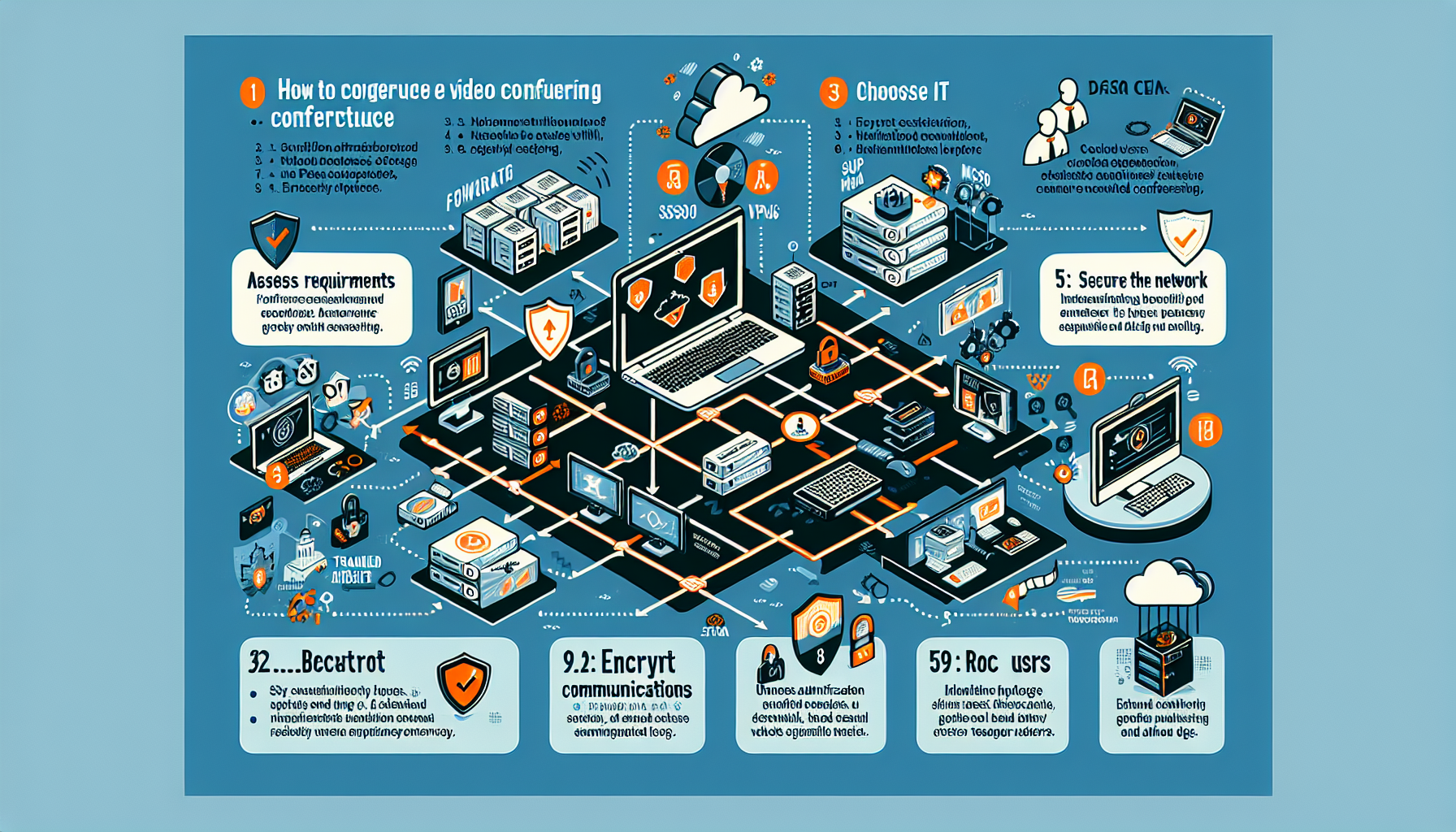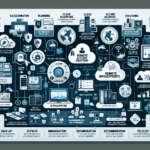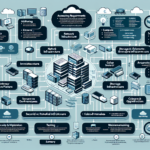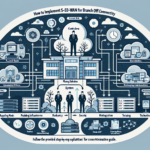To configure IT infrastructure for secure video conferencing, you need to consider several aspects, including network security, hardware, software platforms, user access control, and data protection. Below is a comprehensive guide for setting up a secure video conferencing solution:
1. Assess Requirements and Plan the Infrastructure
- User Base: Determine the number of users, locations, and devices.
- Bandwidth: Ensure you have enough network bandwidth to handle video conferencing traffic without impacting other critical services.
- Compliance: Consider compliance with regulations such as GDPR, HIPAA, or local data privacy laws.
- Collaboration Tools: Choose a video conferencing platform that meets your organization’s functional and security needs (e.g., Zoom, Microsoft Teams, Cisco Webex, or self-hosted solutions).
2. Choose a Secure Video Conferencing Platform
- Opt for platforms that provide end-to-end encryption (E2EE) to protect communications.
- Verify that the platform supports features like password-protected meetings, waiting rooms, and multi-factor authentication (MFA).
- If privacy is critical, consider deploying an on-premises solution or a self-hosted open-source platform (e.g., Jitsi Meet or BigBlueButton).
3. Set Up Server Infrastructure
- Deploy the video conferencing server(s) in a secure data center or cloud environment.
- Use virtualization platforms such as VMware, Hyper-V, or Proxmox to isolate the conferencing server from other systems.
- If GPU acceleration is needed for video processing, install NVIDIA GPUs and configure them with the appropriate drivers and container runtime (e.g., NVIDIA Docker).
- Use load balancers and content delivery networks (CDNs) to ensure scalability and performance.
4. Secure the Network
- Firewall: Configure firewalls to allow only the necessary ports (e.g., TCP/UDP for video conferencing traffic).
- Virtual Private Network (VPN): Require remote users to connect through a secure VPN before accessing on-premises systems.
- Network Segmentation: Isolate the video conferencing servers on a dedicated VLAN to minimize exposure to other parts of the network.
- QoS (Quality of Service): Prioritize video conferencing traffic to avoid latency issues.
5. Implement Access Control
- Use LDAP/Active Directory or Single Sign-On (SSO) for centralized user authentication.
- Enforce Multi-Factor Authentication (MFA) for all users accessing the video conferencing platform.
- Set up role-based access control (RBAC) to limit administrative access to the system.
6. Encrypt Communications
- Enable TLS/SSL certificates for all connections to the video conferencing platform.
- Use end-to-end encryption (E2EE) to ensure that video and audio streams cannot be intercepted.
- Encrypt stored recordings and ensure they are accessible only to authorized users.
7. Implement Backup and Disaster Recovery
- Configure regular backups of the video conferencing platform, including configurations, databases, and recordings.
- Store backups in a secure, geographically redundant location.
- Test disaster recovery procedures to ensure quick restoration of services in case of failure.
8. Monitor and Audit the System
- Deploy a centralized logging system to collect logs from the video conferencing servers for analysis and incident response.
- Use monitoring tools like Nagios, Zabbix, or cloud-based monitoring solutions to track system performance and availability.
- Regularly audit user activity, access logs, and system configurations.
9. Educate Users
- Train employees on secure video conferencing practices, such as:
- Using strong meeting passwords.
- Avoiding sharing meeting links publicly.
- Being cautious of phishing attempts related to video conferencing.
- Provide clear documentation on how to use the platform securely.
10. Regularly Update and Patch the System
- Keep the video conferencing platform and underlying OS (e.g., Windows, Linux) up to date with the latest patches.
- If using Kubernetes for containerized deployments, ensure all container images are up to date and scanned for vulnerabilities.
- Use tools like Kube-bench or Aqua Security to enforce security best practices in containerized environments.
11. Integrate AI for Security and Performance
- Use AI-driven tools to detect unusual activity or potential breaches in real-time.
- Utilize AI for performance optimization, such as adaptive bitrate streaming and noise suppression.
- Consider integrating AI chatbots for automated scheduling and user support.
12. Test and Validate Security
- Conduct regular penetration testing and vulnerability assessments on the video conferencing infrastructure.
- Engage third-party security firms to validate the security of the platform and configuration.
- Simulate disaster recovery scenarios to ensure the system is resilient and meets business continuity requirements.
By following this guide, you can configure a secure and robust IT infrastructure for video conferencing that meets both performance and security needs. Always review and adapt your setup based on evolving threats and technological advancements.





